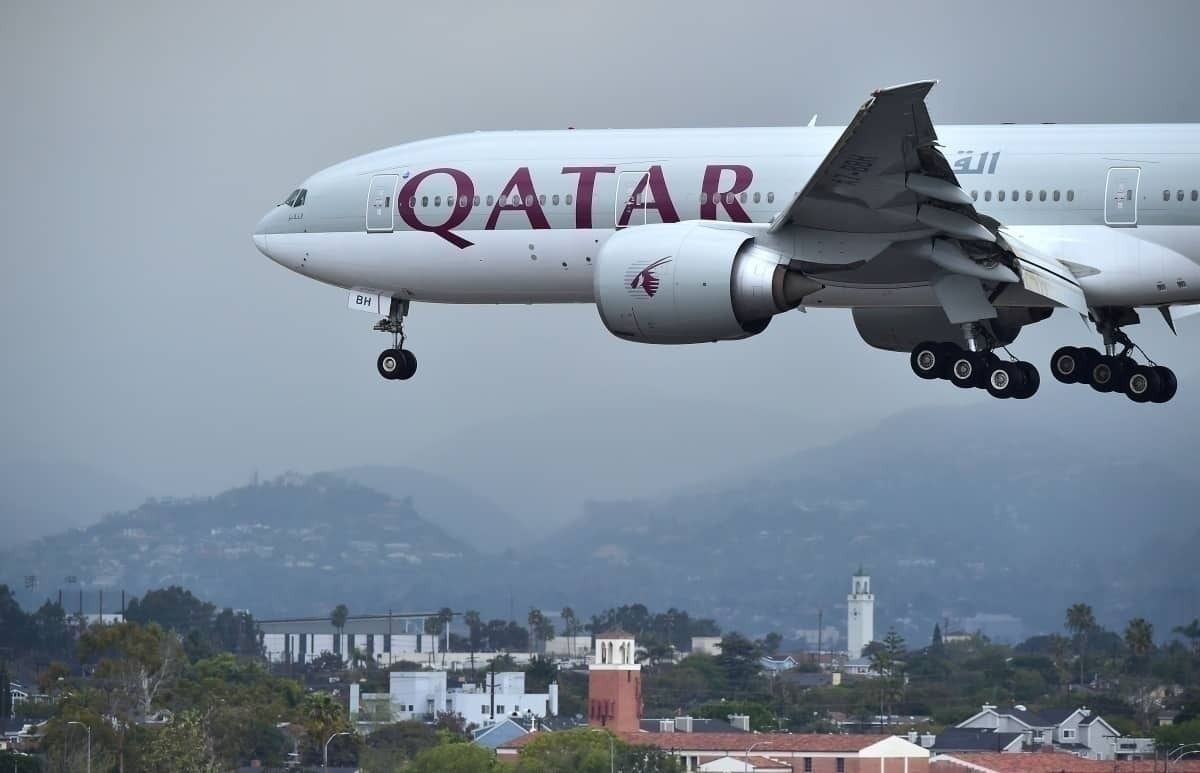To say the Boeing 787 program is in a mess is a gross understatement. Fourteen 787s were delivered last year, with the last delivery, to Turkish Airlines, in June.
According to its March 31 orders and deliveries report, Boeing sits on 481 unfilled 787 orders.
Even the 115 already built are not going anywhere until the Federal Aviation Administration (FAA) says they can. Emirates President Sir Tim Clark has already said that the 30 787s on order may not have a place in the Emirates fleet.
Other major customers with orders include American Airlines with 25, Qatar Airways with 23 and Lufthansa with 20. The often-cited Unidentified Customer has 39 787s on order.
Qatar Airways has 23 Boeing 787s on order to bolster its widebody operations. Photo: Getty Images
It’s the tiny gaps that count with the FAA
The current situation is that Boeing has submitted a plan to the FAA for proposed fixes to manufacturing flaws on the aircraft.
The flaws relate to minuscule gaps surrounding the passenger and cargo doors left from making the carbon-composite structure. The gaps are reported to be the width of a human hair, but they violate Boeing’s specifications.
In its defense, Boeing says the 787s problems stem from its specification incorporating a high safety margin. In January, Reuters reported that Boeing was claiming its initial specifications of the gaps can be tweaked without risking safety, with a Boeing spokesperson saying:
“The issues that our engineers identified and are addressing are part of our methodical approach to ensure conformance to our exacting specifications.”
Unsurprisingly, given how the Boeing 737 MAX issues unfolded, the FAA stepped in. On February 15, it said it would perform final inspections on new Boeing 787 Dreamliner aircraft and would not allow Boeing to self-certify the jets.
The FAA added that it would retain the authority to issue airworthiness certificates until it is confident
“Boeing’s quality control and manufacturing processes constantly produce 787s that meet FAA design standards.”
Boeing released its 2022 first-quarter results last week, recording a loss of $1.2 billion. In a memo to employees, CEO Dave Calhoun said that a [787] certification plan had been submitted to the FAA, and Boeing will “follow the lead of the regulator.”
He added that rework had been done on initial airplanes, and Boeing flight tests were being conducted.
Existing Boeing 787 operator American Airlines has a further 25 on order. Photo: Vincenzo Pace | Simple Flying
The factory’s humming but nothing’s going out the door
The next day Calhoun appeared on a live TV cross from Boeing’s 787 final assembly plant in South Carolina. With 787s being worked on in the background, he said, “This factory is humming and airplanes are ready to be flown.”
“I’m confident that the FAA alongside our engineering team will work their way through this certification and we’ll be back in the air sooner rather than later.”
Boeing has stopped making predictions on when deliveries will resume, although industry talk is the third quarter of this year.
Boeing’s reality is that the FAA was badly burnt in the MAX debacle, and it will not let that happen again. It will not cut Boeing even one hairs-width of slack, so when the 787 returns is entirely out of the planemaker’s control.
It’s almost impossible to envisage the FAA will agree to Boeing changing the specifications because they are too stringent.
Boeing has already said this issue will cost around $5.5 billion, not including the reputational damage it’s suffering. Particularly with the Airbus A350 continuing on its merry way.
Boeing needs to quickly get the 787 issues fixed and certified and the 737 MAX back operating freely in all parts of the world.
But when will that happen?
Discover more aviation news here.
Read Next
About The Author
[ad_2]
Source link


.jpg)


